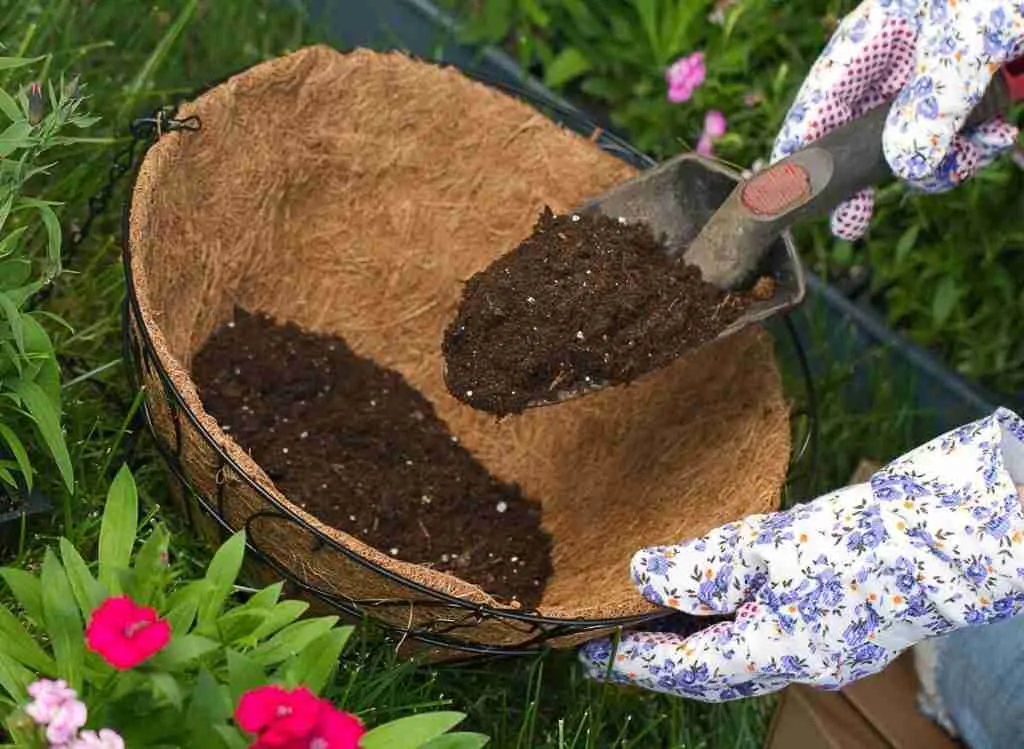
Sometimes plants in the pots get various diseases and need special attention. When you notice this type of situation, you need to act faster to prevent the spreading of disease.
In some cases, the potting soil also needs replacement, but some people don’t want to throw this soil at all. Rather they still consider it reusable after some processing for greenhouses. So, how to dispose of old potting soil?
Read on to find out how to easily and properly dispose of old potting soil.
See also: 13 Amazing House Plants Benefits You Need to Know About!
How To Dispose Of Old Potting Soil?
It is quite easy to throw away potting soil in the garbage. However, what if you can recycle it? There are many ways to recycle your used potting soil into something valuable.
See also: How Many Houseplants Are Actually Too Many (What I found!)
Upcycle the Potting Soil
Here is a quick and easy method to recycle your used pot soil into something more valuable.
1- Maintain the Volume of Potting Soil
When you use the soil for the growth of your plants, it loses its volume with time. This loss of volume is due to the loss of certain ingredients that help in the healthy upbringing of the plants. You can add multiple ingredients to regain the original drainage capability of the soil.
Here are some of the ingredients that can help you with this purpose.
- Coir fiber
- Peat moss
- Kelp meal
- Perlite
- Fish meal
- Rice hulls
- Alfalfa meal
All these ingredients play an important role in improving the fertility of the old potting soil. You can also add any additional ingredient according to the nature of your soil.
2- Microbial Addition
Once you have met the proper requirements of the volume, the next step is to maintain the microbes level of your soil. Microbes also play an important role in increasing the fertility of the soil and preventing soil deficiencies.
They help the plants to gain the maximum organic food in the form of humus. But all this is possible if you know how to add microbes to the old potting soil.
There are two ways to add essential microbes to the soil.
- Purchase compost from the market.
- Use natural methods to add microbes to your soil.
You can use any of these methods for microbial addition in the soil. Adopt the best method according to your circumstances.
3- Mineral Addition
The next level, after the addition of microbes, is mineral addition. Minerals are one of the essential elements that help to maintain the pH of the soil. You can add minerals in two different ways.
- By using fertilizers to boost your potting soil.
- By adding organic products to the soil.
- By beneficial pests.
But keep in mind that organic materials are essential to keep the potting soil fertile for a long time.
What Are The Risks Of Recycling Old Potting Soil?
- Risks of pathogens, including viruses, bacteria, fungi, nematodes, and other organisms that the potting soil might carry disease.
- The Used potting soil can be deficient in the essential minerals that plants require.
Both pathogens and essential minerals deficiency can lead to container plants getting sick and dying.
See also: Can You Really Compost Bread? (Let’s find out!)
How To Throw Away the Potted Plants?
It might be tempting to reuse last year’s potting mix for your new container garden. However, keeping your garden evergreen needs special attention, and you have to take specific measures. One such task is throwing off your potted plants that need replacement.
Throwing plants is not always an option for maintaining greenery. You can also add essential nutrients to the potting soil to compost the plants.
It’s up to you to compost your houseplants or throw them off. There is no law against throwing potted plants as long as it doesn’t contain any diseases or viruses. However, composting your houseplants is better to practice than throwing them off. Anyway, if you want to throw off your plants, here are some ways to get rid of them.
- Using any weed-killer spray
- Eradicate them
- Replace them with such plants that will kill them automatically
- By using cider vinegar
- Through bleach water
After you have gotten rid of the unwanted plants, the next challenge is how to throw them off. Here are some best methods for this task.
- You can throw them in any landfill.
- Transfer them to any transfer station or C&D recycle center
- Dump them in the nearby dump site
Can You Throw Away Potting Soil?
Throwing away potting soil depends upon its condition. Sometimes, you can upcycle the potting soil to turn it into something more valuable. However, if you diagnose any disease in any particular potting soil, you don’t have any other option except to throw it off.
You can throw that diseased soil in any landfill, to any C&D station, in any dump site, or you can send it to any nearby construction if they accept such practices.
See also: How To Effectively Get Rid Of Golden Rain Tree Bugs: A Complete Guide
What Can You Do With Old Soil?
Mostly, people tend to dispose of their old potting soil at the end of the gardening season. If you diagnose any particular disease in this soil, happily dispose of it.
However, if you consider your soil recyclable, go for it. Upcycling the potting soil by adding humus to it is also a good option. Here are some of the best ways to upcycle your old potting soil.
- Secure the soil to make a bed for a new garden. This will act as a filler for your new garden.
- You can make a potato bin with the old soil.
- Use it to make a plant swap
- Compost is by adding essential nutrients to it.
Can You Save Used Potting Soil?
Generally, it is fine to reuse potting soil if the plants you are growing are healthy. However, if you do see pests or diseases in your plants, it is best to sterilize the mix to prevent infecting next year’s plants.
Unless your containers have some disease problems, you can reuse old potting soil. However, at the end of the growing season, a potting mix’s fertility decreases and might not contain enough nutrients for your plants to grow stronger and healthy. You can recycle by adding:
- New potting soil
- Additional perlite (perlite provides great drainage, according to the Pennsylvania State University)
- Screened compost
- And slow-release fertilizer.
Keeping Your Plants Containers Clean
It is essential to clean your old pots each time you use them properly because mineral salts can damage your plants, according to Iowa State University.
See also: How To Properly Use Epsom Salt To Kill Weeds?
How to Properly Clean Your Plant Containers
- Soak your pots in a solution including one part household bleach to 9 parts water for at least 10 minutes.
- Then place your pots in a water solution and dish detergent.
- Use a wire-bristle brush or steel wool to clean clay pots and remove mineral deposits and other debris. And if there are still minerals, you can use a knife to scrape them off.
- Wash pots thoroughly, and then soak them in a bucket of clean water until you decide to use them again.
- Plastic pots are easier to clean because they require only a scouring pad.
See also: 5 Signs Of Over Fertilization You Must Be Looking Out For In Your Garden.
Final Thoughts
If your potting soil previously had a diseased plant, I recommend you throw it properly to prevent the disease from spreading. But, if your potting soil doesn’t shelter pathogens, you can properly clean the containers and store potting soil in winter for use in spring.
However, you must learn how to dispose of old potting soil by upcycling it, including maintaining the volume of potting soil, microbial addition, and mineral addition.


